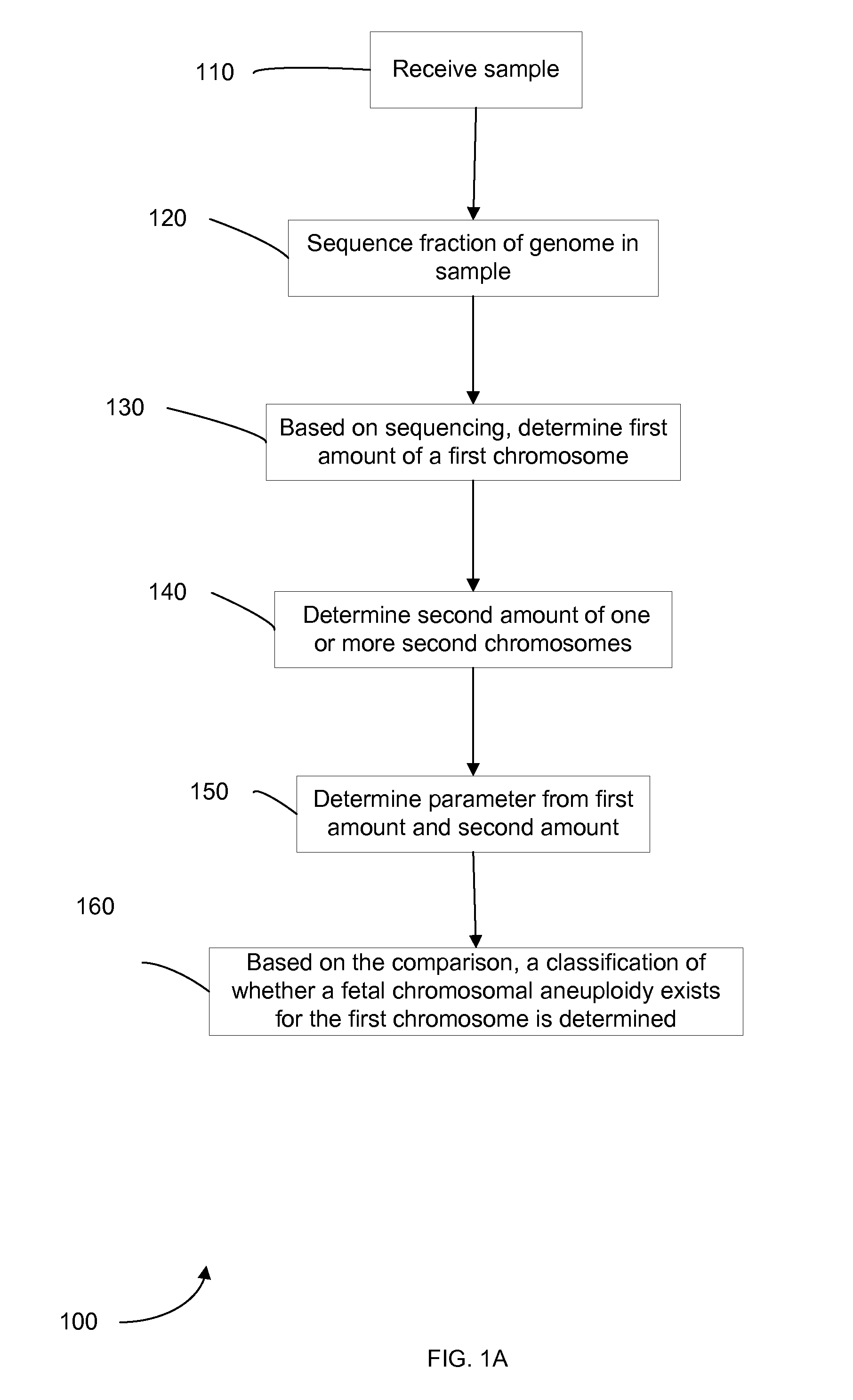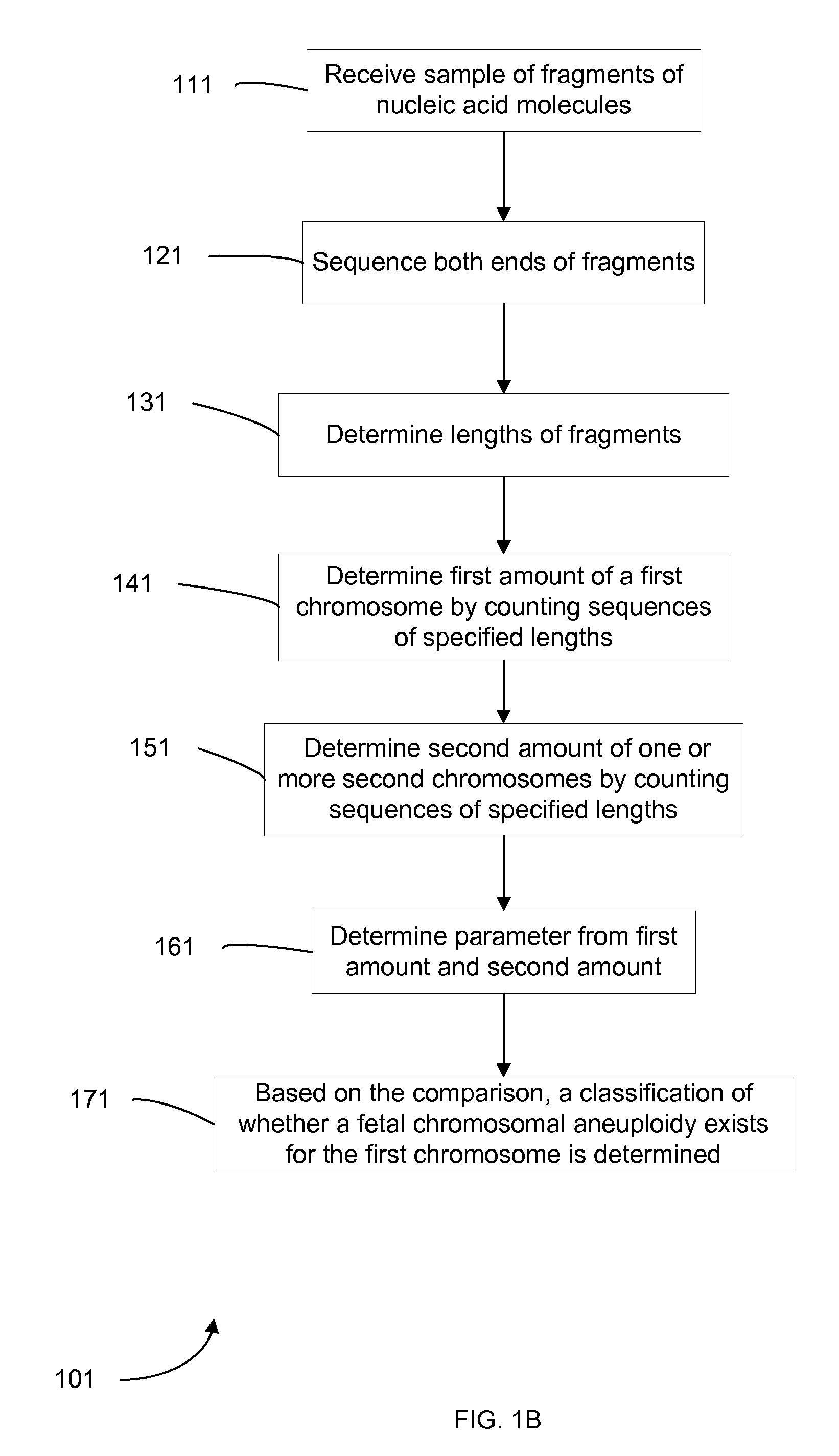Diagnosing fetal chromosomal aneuploidy using massively parallel genomic sequencing
a technology of fetal chromosomes and genomic sequencing, applied in the direction of instruments, biochemistry apparatus and processes, proteomics, etc., can solve the problems of difficult to derive dosage information of genes or chromosomes within the fetal genome, less accurate methods, and suboptimal diagnostic accuracy, so as to improve the sensitivity of the change compared to a reference quantity, the effect of enhancing the sensitivity and accuracy
- Summary
- Abstract
- Description
- Claims
- Application Information
AI Technical Summary
Benefits of technology
Problems solved by technology
Method used
Image
Examples
examples
[0119]The following examples are offered to illustrate, but not to limit the claimed invention.
I. Prenatal Diagnosis of Fetal Trisomy 21
[0120]Eight pregnant women were recruited for the study. All of the pregnant women were in the 1st or 2nd trimester of gestation and had a singleton pregnancy. Four of them were each carrying a fetus with trisomy 21 and the other four were each carrying a euploid fetus. Twenty milliliters of peripheral venous blood were collected from each subject. Maternal plasma was harvested after centrifugation at 1600×g for 10 minutes and further centrifuged at 16000×g for 10 minutes. DNA was then extracted from 5-10 mL of each plasma sample. The maternal plasma DNA was then used for massively parallel sequencing by the Illumina Genome Analyzer according to manufacturer's instructions. The technicians performing the sequencing were blinded from the fetal diagnoses during the sequencing and sequence data analysis.
[0121]Briefly, approximately 50 ng of maternal pl...
PUM
| Property | Measurement | Unit |
|---|---|---|
| length | aaaaa | aaaaa |
| concentration | aaaaa | aaaaa |
| nucleic acid analysis | aaaaa | aaaaa |
Abstract
Description
Claims
Application Information
 Login to View More
Login to View More - R&D
- Intellectual Property
- Life Sciences
- Materials
- Tech Scout
- Unparalleled Data Quality
- Higher Quality Content
- 60% Fewer Hallucinations
Browse by: Latest US Patents, China's latest patents, Technical Efficacy Thesaurus, Application Domain, Technology Topic, Popular Technical Reports.
© 2025 PatSnap. All rights reserved.Legal|Privacy policy|Modern Slavery Act Transparency Statement|Sitemap|About US| Contact US: help@patsnap.com



